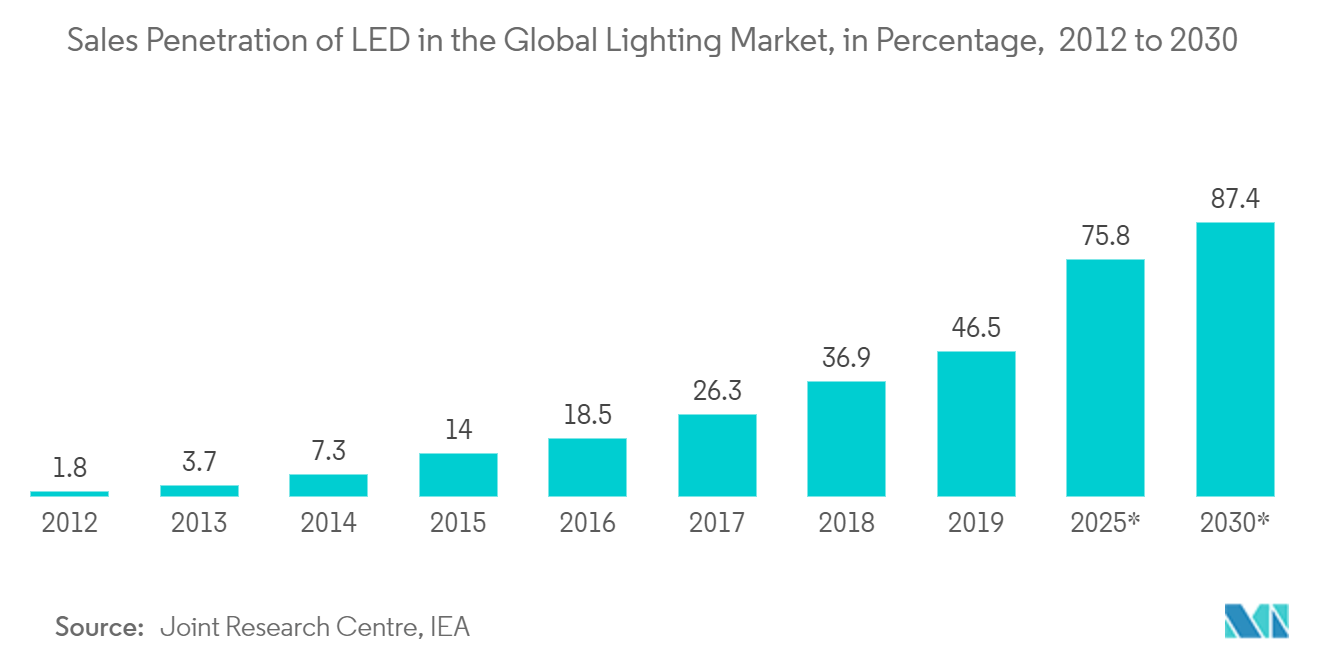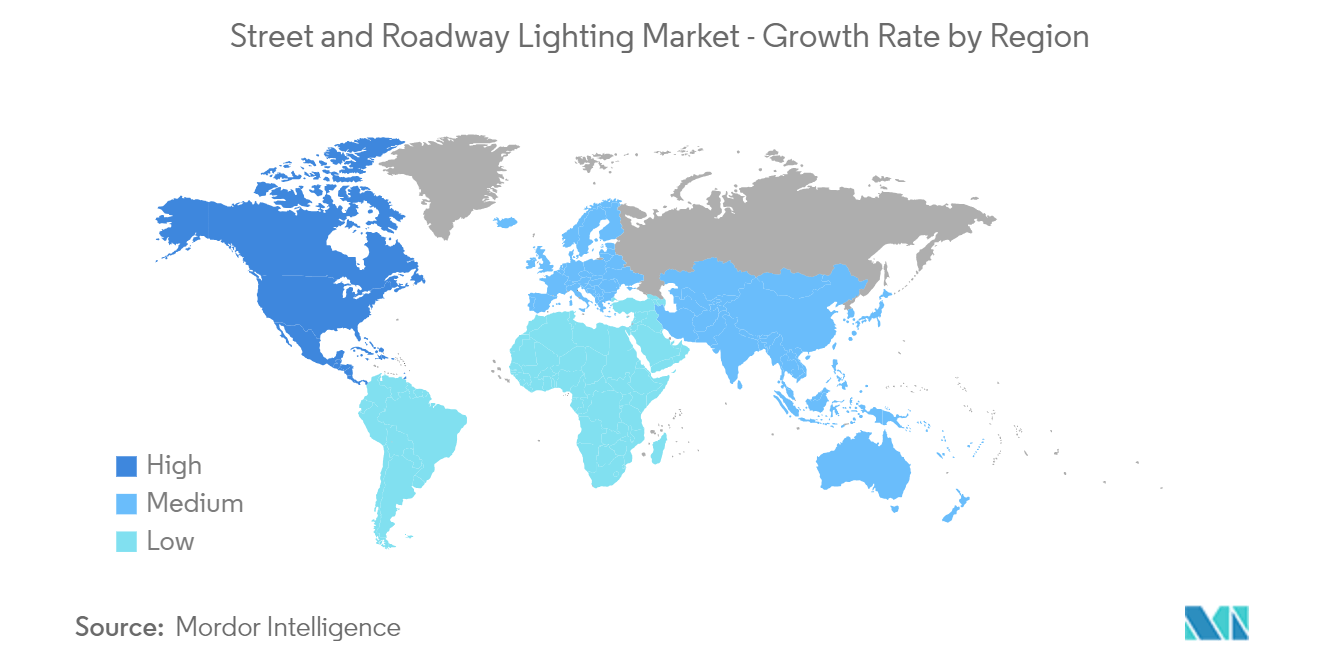Market Trends of Street And Roadway Lighting Industry
LED Lights Segment to Exhibit Significant Growth
- LED lights provide consistent light by improving overall visibility and providing added security for street and highway locations. They can also be paired with photocells, motion sensors, and timers to offer a lighting control system for efficient usage.
- LED lighting is becoming increasingly common to reap the benefits of energy efficiency in the area. According to the U.S. Department of Energy, an Energy Star-certified LED light bulb can utilize up to 90 percent less energy compared to traditional incandescent bulbs while saving more than USD 80 in power costs throughout its lifetime. Due to government regulations supporting energy-efficient lighting, many businesses in the U.S. are implementing LED lighting.
- The International Energy Agency (IEA) estimated that road lighting accounts for 4 percent of total global light, and a switch to LED lights can save an average of 50 percent in energy costs, which results in global savings of USD 160 billion in energy costs, and 555 million tons of CO2. Further, according to IEA, the LED penetration rate is expected to be 87.4 percent of the global lighting market by 2030.
- Moreover, government initiatives are fueling market growth, as many governments worldwide are structuring regulations for encouraging LED adoption. For instance, in India, the government's industry, such as SLNP (Street Light National Program), an initiative to replace 21 million streetlights with LED, further contributes to the market growth.
- Additionally, LED lighting applications provide color across the entire spectrum and thus help improve the aesthetics of outdoor spaces, bridges, roads, and buildings. For instance, in August 2022, the Government of Pittsburgh installed LED lights on three of the city's sister bridges. The installation of 601,440 colored LED lights across the three bridges that connect Downtown Pittsburgh to the North Shore will begin in September with the Rachel Carson Bridge. The project is anticipated to be finished by the end of 2023.

North America to Witness the Significant Market Share
- The rise in smart city initiatives will cause North America to dominate the street and roadway lighting market. Additionally, expanding government initiatives to adopt LED technology for highway and roadway applications will support the growth of the region's street and roadway lighting market over the forecast period.
- One of the key factors influencing the area's lighting market is investments in connected streetlights. Street and road lighting initiatives have already benefited numerous communities across the region. For instance, in September 2022, with the US government's historic USD 1.2 trillion Infrastructure Investment and Jobs Act, Signify and Upciti took the opportunity to aid cities and utilities across the United States and Canada get added value, well beyond illumination from their lighting infrastructure.
- 12,000 streetlights in the City of Laredo were converted to LED lamps as of March 2023, making Laredo the first City in the state of Texas to accomplish such a conversion, according to officials. Additionally, Dallas city officials discussed significantly switching to LED streetlights in March 2022. The City owns about 15,000 streetlights in Dallas, nearly half of which are LEDs.
- The demand for LED lights is expected to increase in the United States between 2020 and 2035, particularly for outdoor uses, according to the Department of Energy. By 2025, 93 percent of outdoor lighting installations are expected to be LED lighting, making it the most popular type across all industries, primarily for connected street lights.
- Furthermore, to make the City's streetlights more energy-efficient, the Alabama City Council approved a USD 4.7 million cost-saving agreement with NORESCO Energy Services in February 2022. Work started on installing LED lights all over the City. The Town of Blountsville and Alabama Power also signed a new LED streetlights contract in April 2022. The price will likely be reduced because the town's expenses will be dispersed over three years. The City will save an estimated USD 128 per month with the power savings strategy. These developments are anticipated to increase the region's demand for LED lighting.



